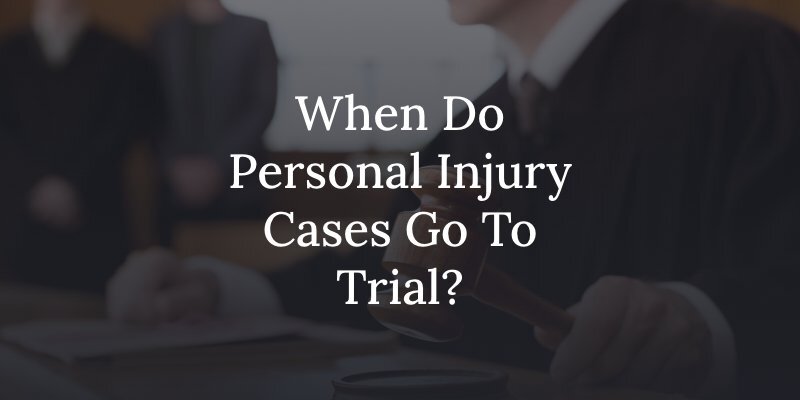When someone else’s careless, reckless, or intentionally wrongful actions cause you to suffer a serious injury, you don’t have to absorb the economic consequences as well as the physical pain and suffering. These are the “damages” in a personal injury claim. Instead, you can demand financial accountability from the party that caused your injury by pursuing a claim against the at-fault party. Sometimes, an injury victim chooses not to file a personal injury case because they worry about having to go to court. How often do personal injury cases go to trial, and when is a trial necessary?

Most Personal Injury Cases End In Settlements
Although there are no well-researched statistics, some estimates show as many as 95% of personal injury cases end with a settlement, with no need for court. Most personal injury cases begin as direct claims against an at-fault party’s insurance. For example, in a car accident case, the claim would be against the at-fault party’s auto insurance. After a slip-and-fall injury in a big box store, the personal injury claim would be filed against the store’s commercial liability insurance. A medical malpractice case is filed against the at-fault doctor’s malpractice insurance.
A Kansas City personal injury attorney investigates the accident to document compelling evidence of the at-fault party’s liability, so the insurance company must abide by the terms of their contract and pay out on the claim. An injury victim’s personal injury attorney presents evidence of liability and a carefully calculated list of the damages and then enters into negotiations with the insurance company, seeking the highest possible settlement. Insurance companies know they could face high costs if a case goes to court, so most personal injury claims end with an ample settlement.
Why Do Some Personal Injury Cases Go to Trial?
When an injury victim’s damages are substantial, such as in cases of catastrophic injuries with long-term disability, an insurance company may try to protect its profits at the injury victim’s expense. Unfortunately, they sometimes take their chances in court to avoid paying out on a claim, especially if they feel they have a case against the injury victim, such as evidence that the injury victim was partly responsible for their injury or didn’t suffer substantial damages.
In these cases, they may dispute some aspects of the claim or deny it completely. When an insurance company fails to offer an acceptable settlement, the injury victim and their attorney may choose to pursue the lawsuit in court. The injury victim must file the petition to go to trial before the statute of limitations expires on their case. Most states only allow two years, but Missouri’s statute of limitations for personal injury cases is a generous five years from when the injury occurred.
What Are the Advantages and Disadvantages of Going to Court for a Personal Injury Case?
Taking a personal injury case to trial takes much longer than a settlement, and in some cases, the judge might send all parties back to mediation for one or more additional attempts at reaching a settlement agreement.
If the judge agrees to hear the case, the injury victim’s attorney presents a well-planned legal argument in court to prove the at-fault party’s liability, the injury victim’s damages, and the terms of the insurance policy that must cover the injury victim’s damages. Although a court case takes longer to resolve than a settlement, juries are typically more sympathetic to injury victims than defendants and their powerful insurance companies. Many court cases end with a positive jury verdict and a large court award for damages, making the additional distress of a trial worthwhile.

